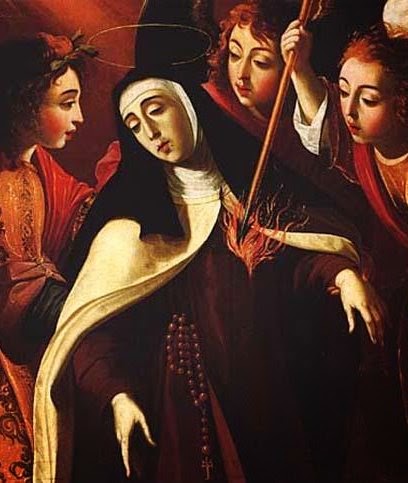“It is foolish to think that we will enter heaven without entering into ourselves.”
Teresa of Ávila, also called Saint Teresa of Jesus, baptised as Teresa Sánchez de Cepeda y Ahumada (28 March 1515 – 4 October 1582), was a prominent Spanish mystic, Catholic saint, Carmelite nun, an author of the Counter Reformation and theologian of contemplative life through mental prayer. She was a reformer of the Carmelite Order and is considered to be a founder of the Discalced Carmelites along with John of the Cross. Teresa is one of the foremost writers on mental prayer, and her position among writers on mystical theology is unique. In all her writings on this subject she deals with her personal experiences. Her deep insight and analytical gifts helped her to explain them clearly. Her definition was used in the Catechism of the Catholic Church: "Contemplative prayer [oración mental] in my opinion is nothing else than a close sharing between friends; it means taking time frequently to be alone with him who we know loves us." She used a metaphor of mystic prayer as watering a garden throughout her writings. She was misunderstood, misjudged, opposed in her efforts at reform. Yet she struggled on, courageous and faithful; she struggled with her own mediocrity, her illness, her opposition. And in the midst of all this she clung to God in life and in prayer. She founded over a half-dozen new monasteries. She travelled, wrote, fought — always to renew, to reform. In her self, in her prayer, in her life, in her efforts to reform, in all the people she touched, she was a woman for others, a woman who inspired and gave life. In 1970, the Church gave her the title she had long held in the popular mind: Doctor of the Church. She and St Catherine of Siena were the first women so honoured.







